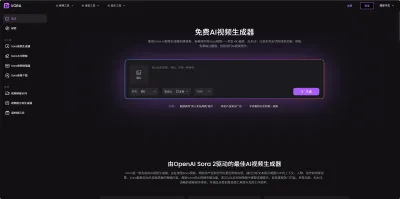A Containerized Dev Environment for Elixir and the Phoenix Framework
Introduction
A dockerized development environment to work on Elixir and Phoenix framework projects while keeping the host environment pristine.
This project was conceived to deal with the issues of running different Elixir and Phoenix versions and supporting the development and maintenance of apps built with different Elixir and Phoenix versions.
Maybe you are working on multiple different projects, built with different versions of the Phoenix framework, or you are working on a long-lived Elixir or Phoenix project. In either case you are likely to hit a version conflict. Phoenix and Elixir are still young and evolving which is great - but some of the changes will likely break your application code. This repository aims to make things easier for you by giving you a straightforward path in swapping out your Elixir and Phoenix environment.
Notable Changes
-
Switch to Bullseye base image This is a potentially breaking change if you are using this image / repository as a base for your own customized images. We're switching from the upstream Alpine images to Debian Bullseye images, since most build tools and libraries, as well as the Erlang documentation are not included in the Alpine stream. Since the primary focus of this repository is to give developers easy access to the entire toolchain to build their Elixir/Phoenix applications with minimal requirements on the host, and as much of an optimal out-of-the-box dev experience with VSCode, we've decided that we'd rather have full toolchains and documentation over smaller image sizes.
-
**Docker Phoenix 1.7.10 ** The default database for the
composestack anddevcontaineris now PostgreSQL 16 -
Docker Phoenix 1.7.5 The image now includes the
build-basepackage by default to support compile-time dependencies likebcryptformix phx.gen.auth -
#1d570c14007b7750da776e0b6bd2b7568ec67de5 We've switched the default branch of the repository from
mastertomain. Please update your local repository refs! -
Docker Phoenix 1.6.15 We are currently in the process of switching to
Alpine Linuxbased images, which are significantly smaller (~150MB vs 1.7GB). Expect the next release to make-alpinethe new default for the dev environments. As a result, you will need to rebuild your VSCode dev containers and your application code. -
Docker Phoenix 1.6.13 Starting with this version, we've switched the Docker image hosted at Docker Hub (
docker pull nicbet/phoenix:1.6.13) to M1 Mac, i.e.,linux/arm64/v8architecture. If you are developing on an Intel machine, you will need to build the docker image on your platform to get started runmake docker-image.
Getting Started
As of December 2022, we recommend using the Visual Studio Dev Containers approach over the command line. See below for details.
Visual Studio Code (Dev Containers)
Setting up a brand-new project
If you are using a recent version of Visual Studio Code with the Dev Containers extension, we highly recommend going this route for a much improved development experience out of the box.
-
Use Degit to quickly clone this project as a scaffold for your new project, for example an app called
hello_world.npx degit nicbet/docker-phoenix#1.7.12 hello_world -
Open the
hello_worldfolder in Visual Studio Code -
When asked, select
Reopen in container. Visual Studio code will create a complete application stack including a PostgreSQL database, and mount your local./appfolder as the root folder for the development environment. -
After initialization of your dev environment finishes, open the
Terminaltab in Visual Studio Code. -
Create your new Phoenix application with the following command (note the
.!):mix phx.new . hello_world -
As the mix command runs, you will see your Visual Studio Code file explorer populate with the files of your new phoenix app. All these files are available outside your development environment in the
./appfolder.
Note: You don't need to use degit. Alternatively, you can clone this repository and remove the .git folder manually.
Configuring the Database Connection
Both, the docker-compose stack started with the docker-compose.yml file included with this repository and the Visual Studio Code Dev Containers stack define a service called db for running a PostgreSQL database that is available to the main application container via the hostname db. By default Phoenix assumes that you are running a database locally. In order to use the db service with your application you will need to modify your Phoenix config and point Ecto to the database host.
To use the included database with your phoenix application you will need to modify the Ecto configuration config/dev.exs and point it to the DB container:
# Configure your database config :test, Test.Repo, adapter: Ecto.Adapters.Postgres, hostname: "db", username: "postgres", password: "postgres", # ... pool_size: 10
Running your Application
To start you application in development mode you will first need to change your Phoenix configuration to bind the phx.server to 0.0.0.0, so that the container exposes the phx.server to the host network.
To bind the phx.server to all interfaces, edit your config/dev.exs file and set the endpoint listen address to 0.0.0.0:
config :hello_world, HelloWorldWeb.Endpoint, http: [ip: {0, 0, 0, 0}, port: 4000], ...
From the VSCode terminal you can run the Phoenix application server with:
mix phx.server
Once the startup is completed, your app will be available at http://localhost:4000
Using the Command Line instead of Dev Containers
After cloning the repository, you can use the included ./run, ./mix, ./npm, and ./yarn scripts to execute commands in the development environment described by included docker-compose.yml file. For instance, running ./mix phx.new . hello_world would generate a new phoenix application called hello_world. Similarly to the Visual Studio Code Dev Containers approach, your project files will be locally stored in the ./app container which is mounted to /app inside the development environment.
The instructions for changing the database connection and bind address as described above apply here as well.
To run any command inside the dev container, you can use the ./run script and pass the command and its arguments.
./run iex -S mix
Building the image for your platform
You can locally build the container image with the included Makefile:
make docker-image
Usage with an existing project
You can use this project to dockerize the development environment for an existing project. Follow the steps above, but instead of initializing a new application with mix phx.new, copy your existing project code to the ./app subdirectory. This will make your existing code available in the dockerized dev environment.
Contributing
This project is intended to be a safe, welcoming space for collaboration. Contributors are expected to adhere to the Contributor Covenant code of conduct. We recommend reading the contributing guide as well.
License
Docker Phoenix is available as open source under the terms of the GNU Public License v3.
Contributors
Docker Phoenix is built by members of the Open Source community, including:
<img src="https://avatars.githubusercontent.com/apenney?s=64" alt="apenney" width="32" />, <img src="https://avatars.githubusercontent.com/cruisemaniac?s=64" alt="cruisemaniac" width="32" />, <img src="https://avatars.githubusercontent.com/homanchou?s=64" alt="homanchou" width="32"/>, <img src="https://avatars.githubusercontent.com/tmr08c?s=64" alt="tmr08c" width="32" />, <img src="https://avatars.githubusercontent.com/jacknoble?s=64" alt="jacknoble" width="32" />, <img src="https://avatars.githubusercontent.com/ravloony?s=64" alt="ravloony" width="32" />, <img src="https://avatars.githubusercontent.com/asifaly?s=64" alt="asifaly" width="32" /> ,<img src="https://avatars.githubusercontent.com/ajmeese7?s=64" alt="ajmeese7" width="32" />, <img src="https://avatars.githubusercontent.com/restlessronin?s=64" alt="restlessronin" width="32" />
编辑推荐精选


Vora
免费创建高清无水印Sora视频
Vora是一个免费创建高清无水印Sora视频的AI工具


Refly.AI
最适合小白的AI自动化工作流平台
无需编码,轻松生成可复用、可变现的AI自动化工作流


酷表ChatExcel
大模型驱动的Excel数据处理工具
基于大模型交互的表格处理系统,允许用户通过对话方式完成数据整理和可视化分析。系统采用机器学习算法解析用户指令,自动执行排序、公式计算和数据透视等操作,支持多种文件格式导入导出。数据处理响应速度保持在0.8秒以内,支持超过100万行数据的即时分析。


TRAE编程
AI辅助编程,代码自动修复
Trae是一种自适应的集成开发环境(IDE),通过自动化和多元协作改变开发流程。利用Trae,团队能够更快速、精确地编写和部署代码,从而提高编程效率和项目交付速度。Trae具备上下文感知和代码自动完成功能,是提升开发效率的理想工具。


AIWritePaper论文写作
AI论文写作指导平台
AIWritePaper论文写作是一站式AI论文写作辅助工具,简化了选题、文献检索至论文撰写的整个过程。通过简单设定,平台可快速生成高质量论文大纲和全文,配合图表、参考文献等一应俱全,同时提供开题报告和答辩PPT等增值服务,保障数据安全,有效提升写作效率和论文质量。


博思AIPPT
AI一键生成PPT,就用博思AIPPT!
博思AIPPT,新一代的AI生成PPT平台,支持智能生成PPT、AI美化PPT、文本&链接生成PPT、导入Word/PDF/Markdown文档生成PPT等,内置海量精美PPT模板,涵盖商务、教育、科技等不同风格,同时针对每个页面提供多种版式,一键自适应切换,完美适配各种办公场景。


潮际好麦
AI赋能电商视觉革命,一站式智能商拍平台
潮际好麦深耕服装行业,是国内AI试衣效果最好的软件。使用先进AIGC能力为电商卖家批量提供优质的、低成本的商拍图。合作品牌有Shein、Lazada、安踏、百丽等65个国内外头部品牌,以及国内10万+淘宝、天猫、京东等主流平台的品牌商家,为卖家节省将近85%的出图成本,提升约3倍出图效率,让品牌能够快速上架。


iTerms
企业专属的AI法律顾问
iTerms是法大大集团旗下法律子品牌,基于最先进的大语言模型(LLM)、专业的法律知识库和强大的智能体架构,帮助企业扫清合规障碍,筑牢风控防线,成为您企业专属的AI法律顾问。


SimilarWeb流量提升
稳定高效的流量提升解决方案,助力品牌曝光
稳定高效的流量提升解决方案,助力品牌曝光


Sora2视频免费生成
最新版Sora2模型免费使用,一键生成无水印视频
最新版Sora2模型免费使用,一键生成无水印视频
推荐工具精选
AI云服务特惠
懂AI专属折扣关注微信公众号
最新AI工具、AI资讯
独家AI资源、AI项目落地

微信扫一扫关注公众号






